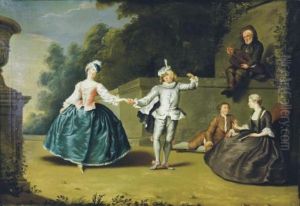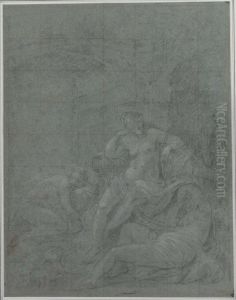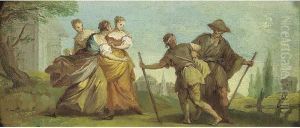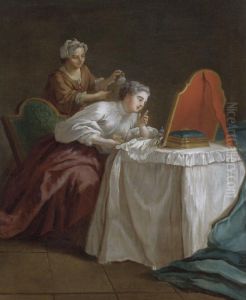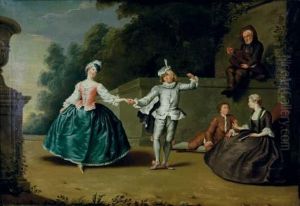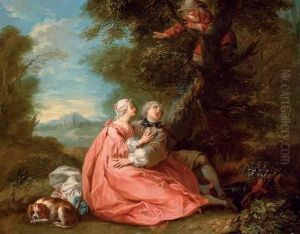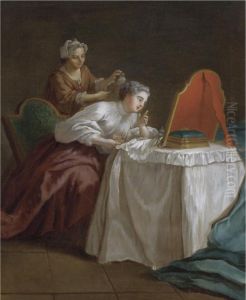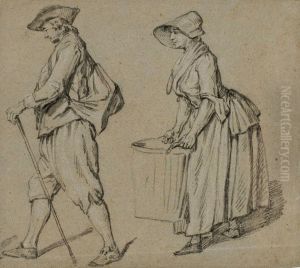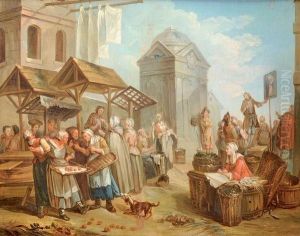Etienne Jeurat Paintings
Étienne Jeurat was a French painter and engraver who lived and worked during the 18th century, a period known for its significant contributions to the arts during what is often referred to as the Rococo period. Born on December 7, 1699, in Paris, he was the son of a carpenter, which might have influenced his early interest in the structural aspects of artistic composition.
Jeurat was accepted into the Académie Royale de Peinture et de Sculpture in 1726 and became a full member by 1733. His art primarily focused on genre scenes, landscapes, and still lifes, which were popular during the Rococo era, characterized by lightness, elegance, and an exuberant use of curving natural forms in ornamentation. Jeurat's works often depicted the daily life of Parisians with a notable attention to detail and a fondness for capturing the various social classes' activities.
Although Jeurat's work is not as widely known today as that of some of his contemporaries, such as François Boucher or Jean-Honoré Fragonard, he enjoyed a certain degree of success and recognition during his lifetime. His engravings and paintings were appreciated for their vivacity and charm, and he exhibited his work regularly at the Salon, the official art exhibition of the Académie Royale de Peinture et de Sculpture in Paris.
Jeurat's career spanned several decades, and throughout his life, he witnessed the shift in artistic tastes from the late Baroque to the Rococo and eventually to the early stages of Neoclassicism. Despite the transformative art movements of his time, Jeurat remained relatively conservative in his style, adhering to the traditional values and techniques that he had mastered.
Étienne Jeurat passed away on May 14, 1789, just before the French Revolution began. This was an event that would radically alter the cultural landscape of France. Although Jeurat's work might not occupy the central place in the canon of French art history, his paintings and engravings provide valuable insights into the aesthetic preferences and social mores of the Rococo period.
